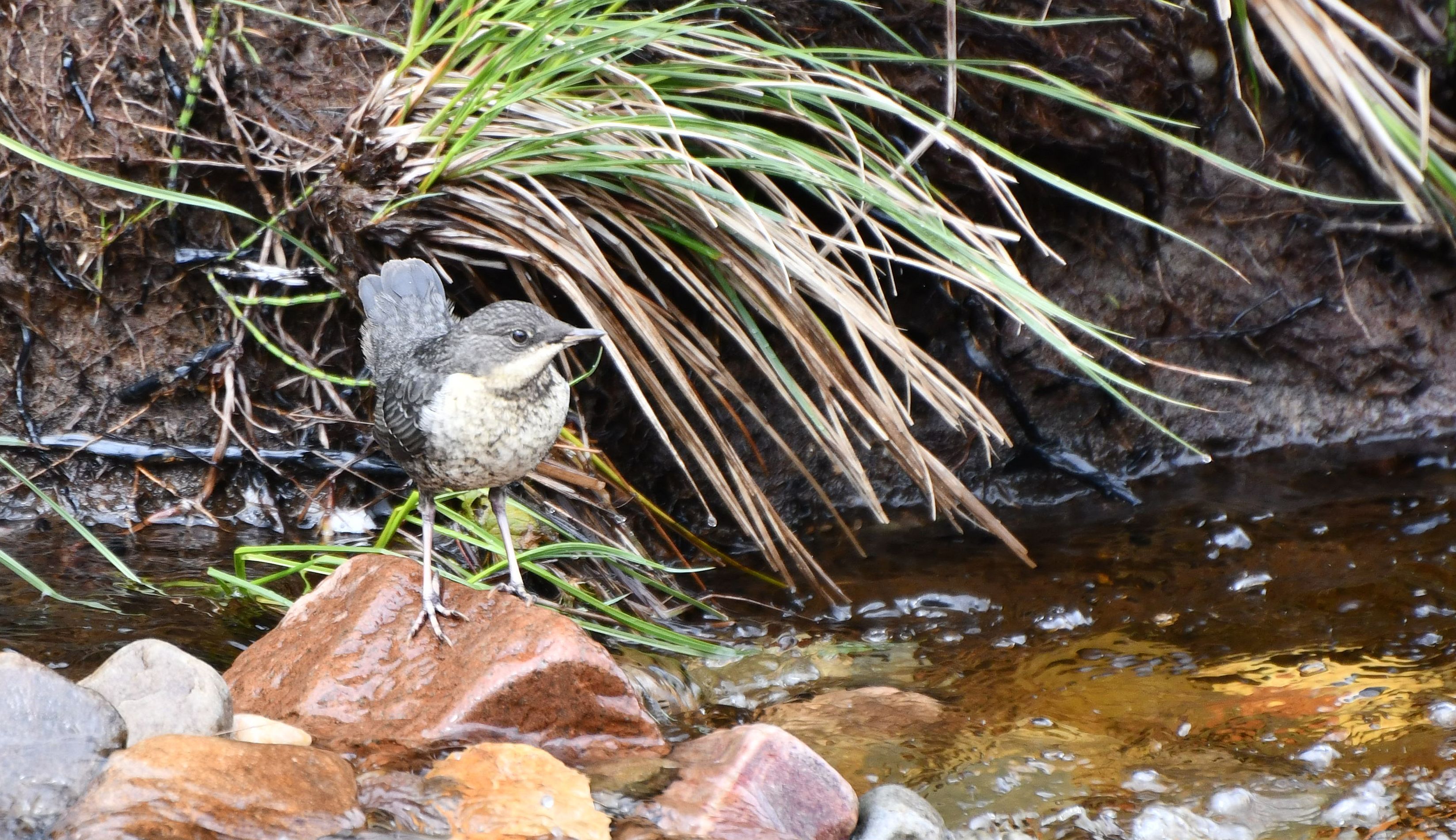Guest blog: the UK's only aquatic songbird
November 11, 2025

I was lucky enough to spend a week canoeing in the Highlands of Scotland, where we met one of my favourite birds, the dipper.Often timid, this bird carried on hunting for prey underwater, re-emerging to perch on a log with several beak fulls of freshwater shrimps and small fish,whacking and feeding on its prey.
Dippers area medium-sized, plump, short-tailed, chocolate-brown-coloured bird with a whitethroat and chest, often seen on fast-flowing rivers or streams in upland areas,Wales and the southwest of England. They are an indicator species of good water quality because their prey of mainly aquatic insects is very sensitive to changes in water.
As Britain’s only aquatic songbird, it has some fascinating adaptations allowing it to thrive in both air and water. Dippers have high levels of haemoglobin in their blood, enabling them to store large amounts of oxygen while underwater. They have flaps that seal their nostrils, and well-developed muscles controlling the shape of their lenses to counteract the visual difficulties of refraction in water. It also has a wetsuit-like plumage, which has one and a half times as many body feathers as a blackbird, all kept well-oiled using its enormous preen gland at the base of its tail. These slick feathers trap thousands of air bubbles underwater, making it silvery looking when diving, which camouflage sits brown body from its prey.
Dippers’ ability to stay underwater is not due to webbed feet, even though they are excellent swimmers, but because of their short but strong flipper-like wings, which beat the bird down to the bottom, and their vice-like crampon claws allowing them to walk along the riverbed to find their prey such as mayfly larvae, nymphs, and caddisflies.
They reach sexual maturity in their first year and nest before the end of February, laying four to five white eggs. The nest is a domed, mossy structure hidden in a stonewall, a crevice in a bridge, or behind a waterfall. The eggs are incubated for16 days and brooded by the female until they are 12-13 days old, with both parents feeding the young. Dippers fledge after three weeks and take to the river, and after 20-30 days, they are fearlessly hunting in torrents. Ten days after fledging, a second clutch will be started.

They are now amber-listed with about 6,900-20,500 UK breeding pairs left. Numbers have been declining since the 1970s due to acidification, pollution, reduced aquatic life and hydroelectric developments and irrigation that have reduced river flows.
However, there are some success stories of dippers recolonising formerly polluted waterways through towns and cities. There is no specific conservation action for them, since they are not under threat, but general conservation work to reduce pollution entering watercourses will definitely help.
Megan Lock is the Game & Wildlife Conservation Trust's farmland biodiversity advisor.
We need your help to fund our crucial independent research and work.
Join our community and receive our exclusive membership benefits.
Receive our monthly e-news and regular updates